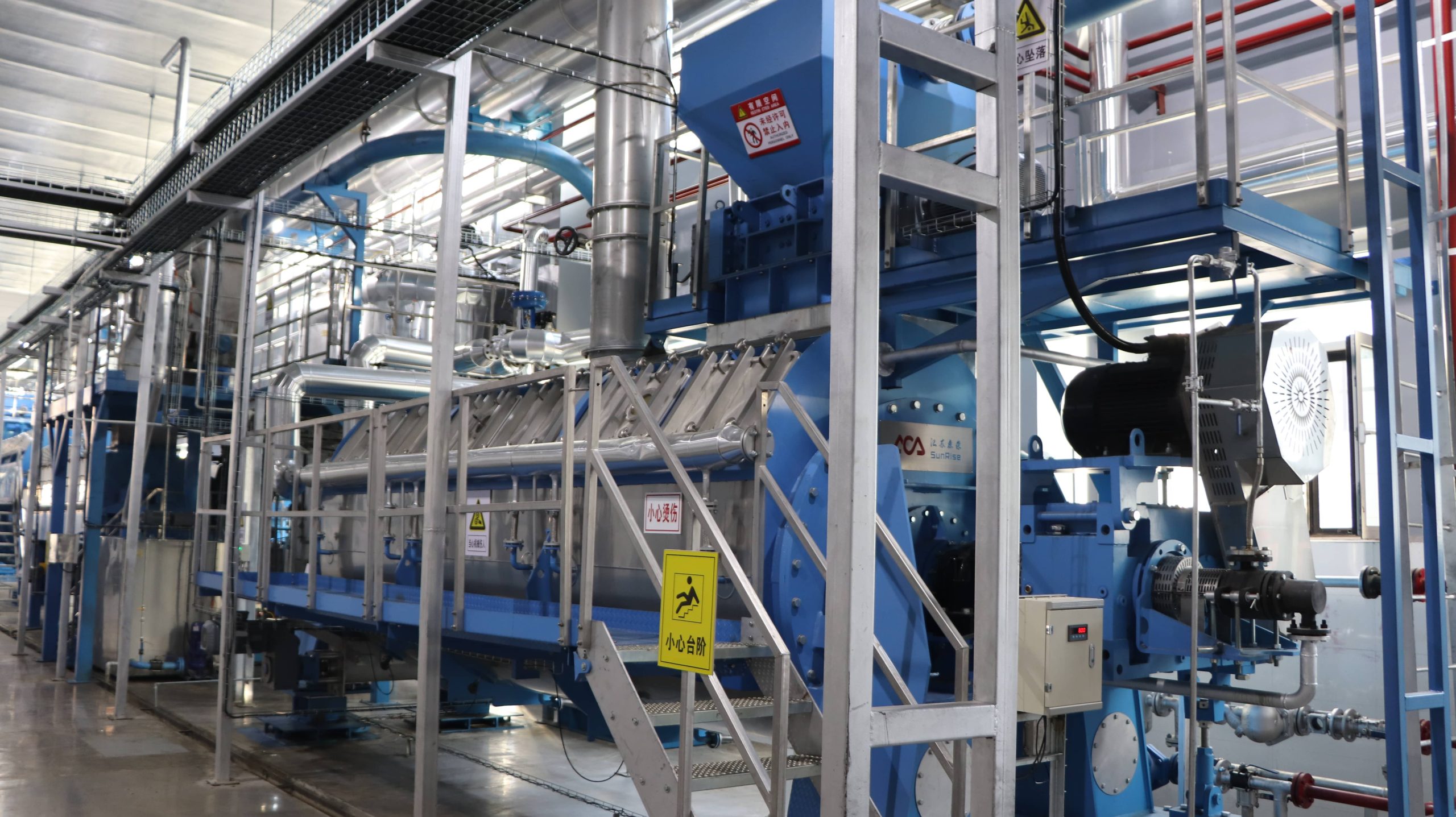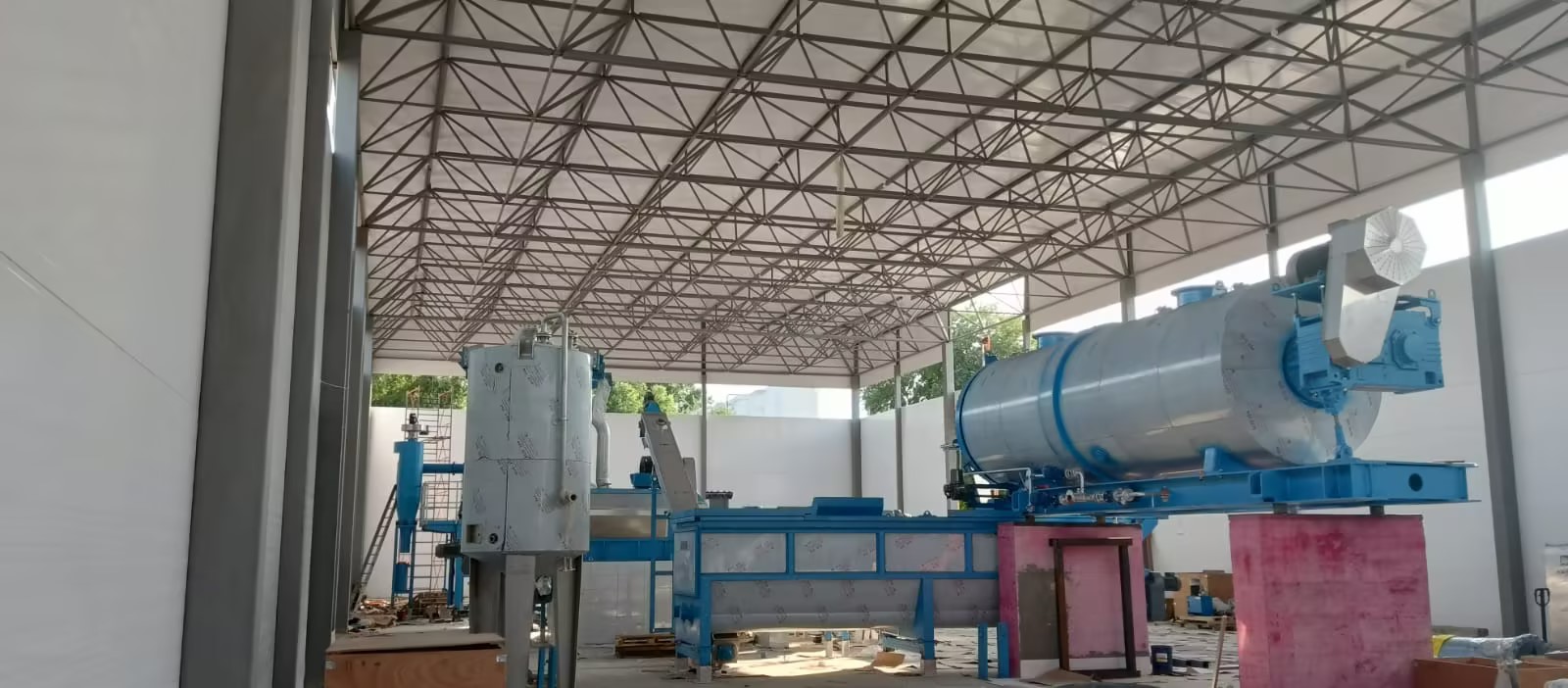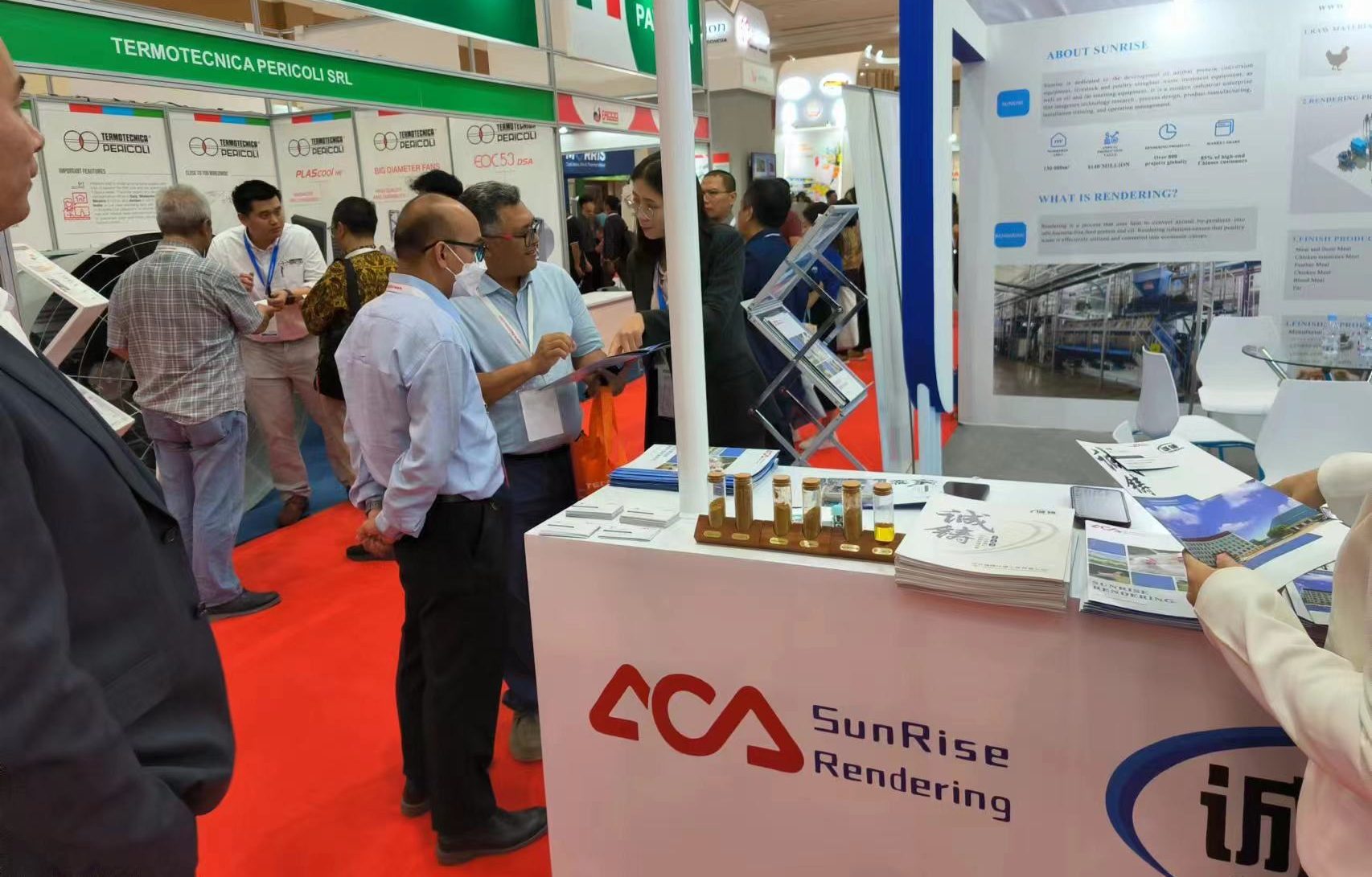
What is Waste Rendering: Transforming Byproducts into Valuable Resources
What is Waste Rendering: Transforming Byproducts into Valuable Resources
Waste Rendering is the process of transforming organic byproducts into valuable resources. These byproducts include animal carcasses, food scraps, and wastewater sludge. The resulting products are used as fuel, fertilizer, soil supplements, and other commercial applications.
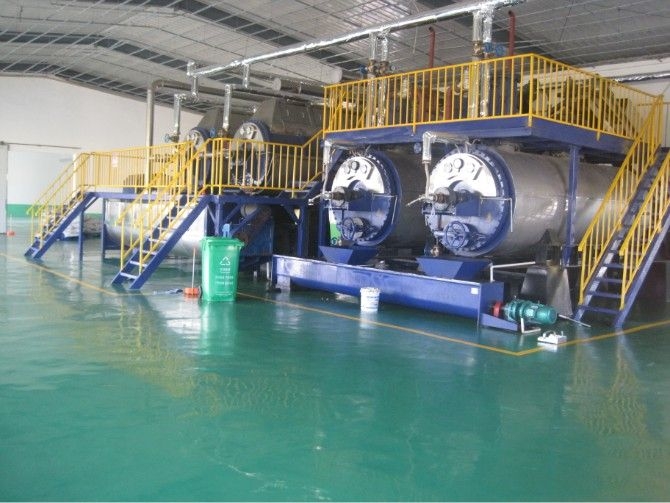
The main goal of any waste-rendering plant is to provide sustainable solutions for dealing with organic waste that cannot be recycled or composted. This ensures that these waste materials don’t end up in landfills or incinerators where they would release harmful greenhouse gases into the atmosphere.
Byproducts from animal farms can include dead animals or their manure which can be processed into fertilizer while food scraps can be processed into energy through anaerobic digestion processes which produce methane gas that can be used as fuel for electricity generation or transportation fuels such as compressed natural gas (CNG).
Why Do We Need Waste Rendering?
Waste rendering serves several important purposes in managing organic waste materials, particularly those derived from animal sources.
Advancing Sustainability through Waste Reduction and Resource Recovery in Rendering
Rendering stands as a highly effective approach for diminishing the volume and weight of organic waste materials. It orchestrates the transformation of raw animal by-products, including bones, fat, and residual meat, into prized commodities like fats, proteins, and of of meals. This streamlined waste reduction not only curtails the environmental repercussions linked to disposal but also trims down transportation expenses.
Rendering serves as a catalyst for the strategic retrieval of valuable resources from waste materials. The process adeptly extracts fats, proteins, and minerals, which find applications across diverse industries, encompassing animal feed, pet food, cosmetics, and biodiesel production. By facilitating the recovery of these resources, rendering effectively mitigates the reliance on virgin materials, thereby alleviating the environmental burden tied to resource extraction.
Maximizing Animal By-Product Utilization and Environmental Benefits through Rendering
Rendering stands as a crucial guardian of the principle that no part of an animal should go to waste following its processing for meat production. Even elements like bones, skin, organs, and other by-products, which may not be suitable for direct human consumption, find new purpose and utility in other industries. This practice fosters a more sustainable and ethical approach to the use of animals, ensuring that their contributions extend beyond meat production.
Rendering emerges as an environmental ally, adept at curtailing the environmental toll of waste disposal. The conventional methods of landfilling or incineration of organic waste can lead to the emission of greenhouse gases, unpleasant odors, and leachates that jeopardize the well-being of the environment. Rendering serves as a remedy to these challenges by transforming waste into valuable products, effectively reducing the dependence on landfills and incineration while fostering a greener and more responsible approach to waste management.
Waste rendering is crucial for minimizing waste, recovering valuable resources, ensuring biosecurity, and reducing the environmental impact of organic waste disposal. It plays a vital role in sustainable waste management practices, resource utilization, and public health protection.
How Does Waste Rendering Work?
Waste rendering is a complex process that transforms organic waste materials, especially those from animal sources, into various useful products like fats, proteins, and meals. The key steps involved in waste rendering are as follows:
Collection and Preparation for Rendering
1)Gathering the Essentials:
Rendering commences with the acquisition of primary raw materials, predominantly comprising animal by-products. These encompass carcasses, bones, fat trimmings, organs, and various residual materials originating from meat processing or the food industry.
2)Scrutiny and Screening:
Before embarking on the rendering journey, the raw materials undergo a meticulous inspection process. This meticulous examination aims to eliminate any contaminants, foreign objects, or non-organic materials, ensuring the purity of the material stream.
3)Size Reduction and Grinding:
The amassed organic waste materials are typically subjected to size reduction and grinding, reducing them into smaller, more manageable pieces conducive to the rendering process. This size reduction may involve crushing or shredding the materials to achieve a uniform size profile.
4)The Culinary Alchemy – Cooking:
The heart of rendering resides in the cooking phase, where the ground organic waste is subjected to heat within rendering vessels or cookers.
Precise Separation in the Rendering Process
5)Rendered Fat:
The liquid fat, frequently referred to as tallow or grease, is efficiently separated and collected. It finds diverse applications across industries, including biodiesel production, cosmetics manufacturing, and industrial lubricants.
6)Rendered Protein Meal:
The solid, protein-rich material, known as meat and bone meal, undergoes a meticulous separation process and is duly gathered.
It serves as a fundamental ingredient in animal feed, and pet food, and contributes as a valuable protein source in various industrial sectors.
7)Water:
The remaining water fraction is addressed according to both environmental regulations and specific facility requirements, either by removal or treatment, ensuring responsible compliance with environmental standards.
Drying, Quality Control, and Distribution in Rendering
8)Optimal Moisture Management:
Following the separation stage, both the protein meal and rendered fat may undergo a crucial drying and cooling process. This phase serves to diminish moisture levels, rendering them suitable for storage or further processing.
9)Vigilant Quality Assurance:
Unwavering quality control remains paramount throughout the rendering journey to safeguard the safety and excellence of the ultimate products. This encompassing oversight includes the meticulous monitoring of temperature, moisture levels, and product composition.
10)Packaging and Widespread Delivery:
The rendered fat and protein meal are routinely packaged in suitable containers, primed for distribution across diverse industries, encompassing agriculture, pet food production, and the realm of biofuel manufacturing.
It’s important to note that waste rendering is subject to strict regulations and safety standards to prevent the spread of diseases, ensure product quality, and protect the environment. Proper handling, hygiene, and sanitation practices are crucial to maintaining the integrity of the rendering process and its products. Additionally, advancements in technology have made rendering more efficient and environmentally friendly, with some facilities utilizing heat recovery systems and other sustainability measures.
What are the Advantages of Waste Rendering?
Waste rendering offers numerous substantial advantages, encompassing both environmental and economic dimensions. These merits position rendering as a pivotal process in the management of organic waste materials, especially those originating from animal sources. Here are the key benefits of waste rendering:
Biosecure Management of Animal Waste through Rendering
Rendering serves as a vital method for the biosecure management of animal waste. It effectively eradicates pathogens, diminishing the risk of disease transmission and thereby safeguarding both public health and animal populations.
Odor Mitigation and Pest Control Benefits of Rendering
Rendering plays a crucial role in mitigating the odors associated with the decomposition of organic waste, rendering it less appealing to pests. This not only contributes to pest control but also alleviates the nuisance factor for neighboring communities.
Promoting Sustainability in Livestock and Poultry Industries through Rendered Protein Meals
Rendered protein meals constitute essential components in animal feed formulations, bolstering the sustainability of the livestock and poultry industries. These meals offer a valuable source of protein and essential nutrients for animals, fostering sustainable agricultural practices.
Plant and Animal By-products: Food for Renewable Energy
Certain rendering facilities harness biogas and other energy recovery systems to generate electricity or heat. This additional facet reduces the environmental footprint while enhancing the overall sustainability of the rendering process, aligning with broader energy generation goals.
Waste rendering emerges as a multifaceted solution with far-reaching advantages, encompassing biosecurity, odor control, sustainable agriculture, and energy generation. These benefits underscore the critical role of rendering in promoting both environmental responsibility and economic viability.
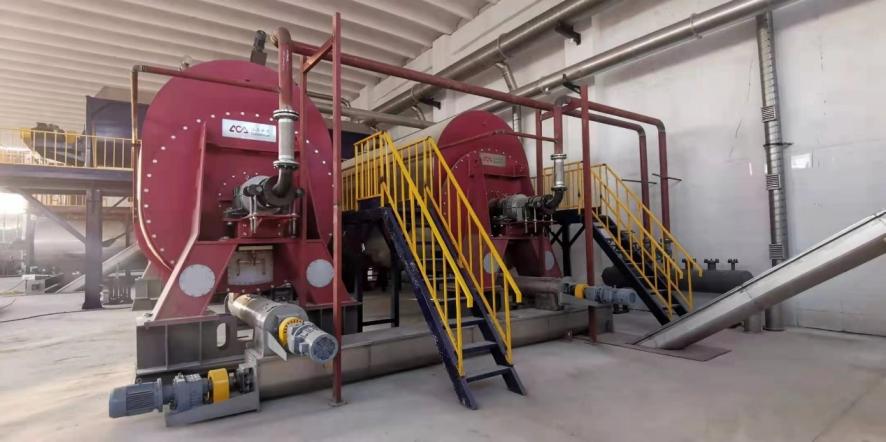
What Does the Future Hold for Waste Rendering?
The future of waste rendering is likely to see several trends and developments aimed at making the process more sustainable, efficient, and environmentally friendly. While the specifics may vary depending on technological advancements and evolving regulatory landscapes.
The Circular Economy- Is This The Future Of Rendering?
The concept of the circular economy, where waste is minimized, and resources are reused or recycled, will likely play a more prominent role in rendering. This could involve developing new markets and applications for rendered products and by-products.
Innovations In The Food Waste Industry
With increasing awareness of food waste issues, there may be a greater emphasis on diverting food waste from landfills to rendering facilities. This could include collecting and processing food scraps and expired products from grocery stores and restaurants.
Biosecurity and Disease Management
As concerns about animal diseases and pandemics persist, rendering will continue to be a critical tool for biosecurity and the safe disposal of animal by-products.
Options For Sustainable And Alternative Protein Sources
As the demand for sustainable and alternative protein sources grows, rendering facilities may explore new raw materials beyond traditional animal by-products. This could include insects, algae, and plant-based materials.
The future of waste rendering is likely to involve a combination of technological advancements, sustainability initiatives, regulatory changes, and shifts in consumer preferences. As society continues to prioritize environmental responsibility and resource efficiency, the rendering industry will adapt to meet these evolving demands and challenges.
CONCLUSION
In conclusion, waste rendering is a vital process in the management of organic waste materials, particularly those derived from animal sources. It offers numerous benefits, including waste reduction, resource recovery, biosecurity, environmental protection, and economic value. The future of waste rendering is likely to be shaped by trends toward sustainability, advanced technologies, circular economy principles, and increased attention to food waste reduction and biosecurity.
As society continues to prioritize environmental responsibility and resource efficiency, the rendering industry is expected to evolve and adapt to meet these evolving demands and challenges. Overall, waste rendering plays a crucial role in sustainable waste management and resource utilization, contributing to a more efficient and responsible use of resources.

